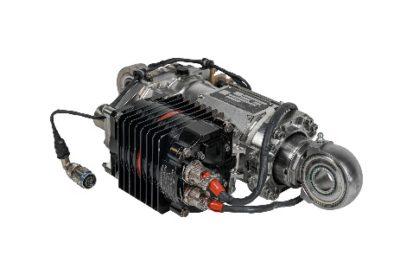Are Actuators the Linchpins of Urban Air Mobility?

Collins Aerospace (Collins), a Charlotte, North Carolina-based design, engineering, and manufacturing firm, is one of the world’s largest suppliers of aerospace and defense products. With about 68,000 employees working in more than 300 locations worldwide, Collins, a subsidiary of Raytheon Technologies, is poised for takeoff when it comes to the burgeoning urban air mobility movement. Collins Aerospace’s Actuation Systems division, headquartered in Wolverhampton, UK, will serve a market that was US$ 9.1 billion in 2020 and is estimated to reach US$21 billion by 2030.
The key word here is “mobility.” Collins makes actuators – devices that control the aircraft in flight.
In other words, they make urban air mobility aircraft mobile.
In addition to actuators, Collins develops and manufactures technologies in a number of areas relevant to UAM, including: avionics, fly-by-wire systems, flight controls, electric propulsion, and UAV/UAS (which encompasses small form factor autopilots, imaging systems, LIDAR, and command-and-control datalinks).
Of the 300-ish UAM projects in development worldwide, Collins has selected a small number of enterprises to work with based on the companies’ focus on safety and chances of success, according to Keith Bloxham, Collins’ engineering manager for Actuation Systems.
This entirely new class of aircraft present several design challenges when it comes to actuation, including: electromechanical actuator (EMA) failure modes, such as jam free/tolerant gears, jam relief devices, prognostics and health management; envelope, including thin wing actuator concepts and powered hinge-type EMAs; and swashplate control or swashplateless EMA systems.
The benefit for UAM manufacturers and operators, Bloxham says, will be complete stick-to-surface capabilities. Collins aims for low-weight, compact, modular solutions that ultimately will facilitate aircraft certification and high-volume production capabilities.
According to David Chard, Collins’ business development director for Actuation Systems, eVTOLs and hybrid UAM using Collins’ components will gain advantage from composites that are lightweight, yet have high specific structural performance.
Composite components can be manufactured to be multifunctional, for example with tunable electrical properties and thermal conductivity—a real plus in military and commercial applications. The company is also developing high volume, multi-axis braiding technology with snap-curing resins that will enable it to deliver integrated, functional, complex products at a competitive price.
Using their thin-wing actuators, Collins aims to achieve a 30 percent to 50 percent weight reduction compared to current technologies. Collins’ safety features include fault-tolerant and fail-safe designs, along with integrated prognostics and system health management.
In aviation operations, whether conventional, contemporary, or future systems, maintenance comes with the territory, so Collins designs and builds it actuators with ease of maintenance and maximum maintainability as well.
The result of these efforts will be eVTOL and other UAS aircraft that will transport passengers and cargo reliably, safely, through the UAM system when it’s met all the new standards under development today.
Want to continue to stay up-to-date about the latest developments in the eVTOL industry? Subscribe to AeroCar Journal now. It’s FREE (for a limited time)! Join us on Twitter for the latest news, analysis, and insight about the eVTOL industry. AeroCarJ



